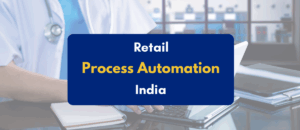Written By – PKC Desk, Edited By – Sambavi, Reviewed By – Balaji Prasath
Fundamentally, cash management is keeping an eye on the money coming in and going out to maximize its usefulness and maintain liquidity. It includes a range of actions, such as:
1. Cash Forecasting :
The foundation of efficient cash management is accurate cash forecasting. Businesses can forecast their cash inflows and outflows and make plans to meet their anticipated liquidity needs. Strong forecasting reduces the possibility of cash shortages and promotes proactive decision-making.
2. Working Capital Optimization :
To preserve liquidity without tying up surplus cash, working capital, which includes accounts receivable, accounts payable, and inventory, must be managed effectively. Organizations can ensure smooth operations and free up cash for other uses by simplifying these components.
3. Cash Flow Monitoring and Analysis :
Ongoing cash flow monitoring and analysis sheds light on the financial stability of the company. Businesses can highlight areas for improvement and put focused initiatives into place to maximize cash utilization by recognizing patterns and trends.
4. Cash Conversion Cycle Management :
Working capital and liquidity optimization depend on controlling the cash conversion cycle, or the amount of time it takes to turn raw resources into cash through sales. Organizations can boost overall cash efficiency and expedite cash inflows by cutting the cycle time.
Techniques for Efficient Cash Management :
In order to improve cash management processes, organizations need to take proactive measures in the ever-changing business climate of today. Here are some crucial tactics to think about:
1. Establishing Cash Reserves :
Having sufficient cash on hand to cover unforeseen costs or fluctuations in income is a financial safety net. Organizations can reduce the possibility of cash shortages and guarantee business continuity in trying times by putting money aside for reserves.
2. Applying Technology Solutions :
You can increase control over cash flows, optimize cash operations, and improve visibility by utilizing cutting-edge technology solutions including electronic payment systems and cash management software. Automation increases efficiency by speeding up transaction processing and lowering manual mistake rates.
3. Negotiating Advantageous Payment Terms :
By extending payment deadlines without facing penalties, vendors and suppliers can assist retain cash for longer periods of time. In a similar vein, encouraging early payments from clients can boost liquidity and increase cash inflows.
4. Optimal Financing Mix :
To maximize the capital structure of the company, internal and external funding sources must be used in balance. Businesses can reduce finance expenses and preserve financial flexibility by using debt and equity wisely.
HEDGING OF CASH RISKS :
Maintaining operations, taking advantage of expansion prospects, and navigating economic uncertainty all depend on effective cash management. But there are dangers associated with managing cash as well, such as changes in interest rates, volatility in foreign exchange, and limitations on liquidity. In order to protect themselves from these risks and maintain financial stability, businesses frequently use hedging techniques. We’ll examine the idea of hedging risk in cash management and look at practical hedging strategies in this blog article.
The primary risks connected to managing cash:
1. Interest Rate Risk :
Changes in interest rates can have an effect on borrowing costs and cash investment returns. While lowering interest rates might reduce investment yields and impact total cash flow and profitability, rising rates may result in higher borrowing costs.
2. Currency Risk :
Currency swings are a major risk for organizations involved in international trade, such as multinational enterprises. Changes in exchange rates can have an impact on the value of cash flows denominated in foreign currencies, which can have an effect on expenses, revenue, and profitability in the end.
3. Liquidity Risk :
Insufficient liquidity might make it more difficult to meet financial obligations and interfere with regular business operations. Unexpected cash flow constraints could force the sale of assets or the need for emergency borrowing, which could result in higher expenses or losses.
In order to reduce the risks described above, companies can employ different hedging techniques based on their unique requirements and situation:
1. Interest Rate Hedging :
To protect against interest rate risk, interest rate swaps, futures contracts, and options are frequently utilized. Organizations can secure favorable interest rates and guard against future rises in borrowing costs or decreases in investment yields by entering into derivative contracts.
2. Currency Hedging :
To protect against currency risk, one might use forward contracts, currency swaps, and options. By fixing exchange rates for upcoming transactions, these tools help firms lessen the negative effects of volatile currencies on cash flows and financial performance.
3. Liquidity Hedging :
You may reduce the risk of running out of cash by keeping cash reserves, diversifying your funding sources, and establishing credit lines.
Author

Haneesh Reddy
Haneesh is a semi-qualified Chartered Accountant with a keen interest in Direct Taxes, International Taxation, and statutory matters. He is also passionate about cricket.

 Expert verified
Expert verified 

